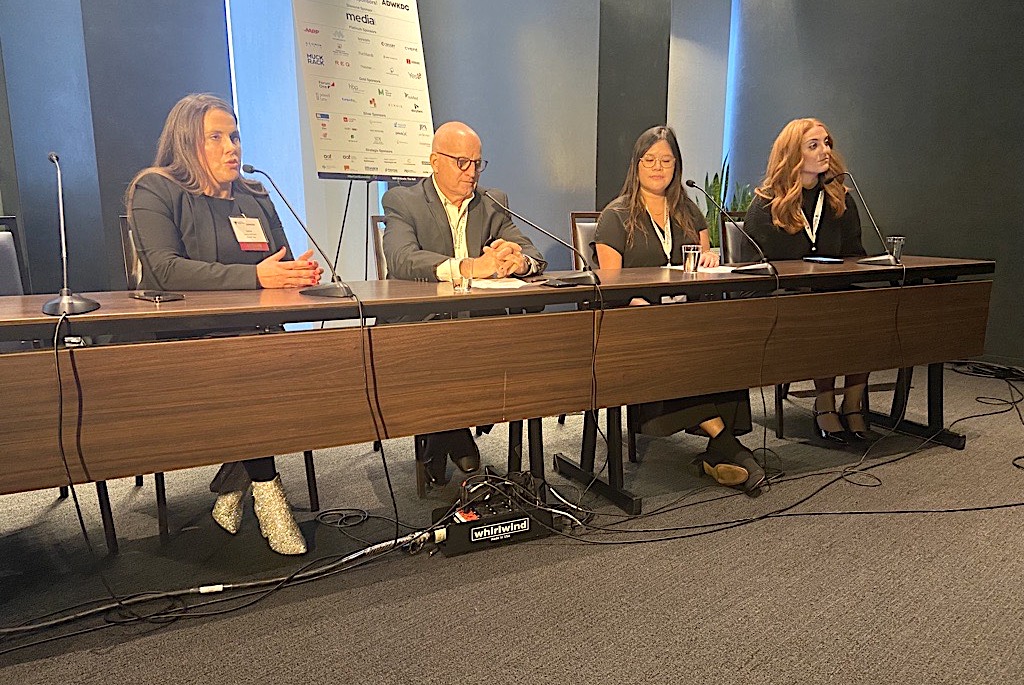

Amid the 2024 elections, Pulse on Political Narratives is a first-of-its-kind, AI-powered study identifying what candidates across the political spectrum are saying about issues that matter to companies and their stakeholders.
Powell Tate was a Gold sponsor at this year’s Mid-Atlantic MarCom Summit, held at Capital One Hall in McLean. Over 500 PR and marketing professionals gathered in-person to hear about topics ranging from AI-powered creativity, to B2G PR, to crisis management in sports.

Powell Tate hosted a panel with Nick Sucich, Director, Digital Communications for the United States Postal Service, Ellyn Briggs, Brands Analyst for Morning Consult; and Anchi Ha, VP, Digital for JPA Health. Moderator Laura Wilson, SVP, Platform Strategy for Powell Tate, explored questions around consumer behavior on social, the power of employees as influencers, and how to leverage micro influencers for high-value campaign impact.

Here are the three take-aways from our panel.
Start Small
There are a variety of ways companies can dip their toes in the influencer game in order to assess if influencer marketing makes sense for the brand. USPS saw that their employees were already talking about the organization in a positive way on social media. They wanted to harness the passion of their employees to advocate for USPS so they started with an employee advocacy pilot program that included about 2,000 employees (a small fraction of the 630,000 people USPS employs). USPS created a pre-approved content library and encouraged employees to post in their own voice and at their own cadence. The employees in the pilot program appreciated the “green light” to talk about the work USPS was doing on social media, and USPS is able to touch new audiences in an authentic voice.
Another way companies can start small is by using micro influencers to target niche audiences.
This is especially effective in the healthcare space. Micro influencers – defined as people with 10K-100K followers, have loyal bases and tend to take-on partnerships where they already have some connection with the cause or organization. Audiences tend to see these micro influencers as reputable and see their connection to the influencer as personal.
Co-create
An influencer program is only as effective as the accuracy of the message and the authenticity of the messenger.
Organizations that create the most impactful influencer programs see the partnership as an open dialogue between them and the creator. Do some research on the influencer before reaching out to them to ensure their style and delivery are aligned with your mission. As you begin your engagement, make sure the expectations of each party are outlined in the contract. Send suggested talking points, ask the creator to weigh in, bounce ideas off each other, go back-and-forth on finalizing the script and the post’s design. Give the creator room to be authentic while ensuring the information they are giving to the audience is correct.
Have Fun!
According to Morning Consult’s Influencer Trends Report, anyone can be an influencer – they just have to post “entertaining content or share inspiration.” Further, Morning Consult’s research uncovered that unpolished video content – especially on TikTok – should be given priority especially if Gen Z is a target audience. Brands and organizations should be open to exploring different ways of engaging influencers to create platform-specific, engaging, authentic content. You never know, your next post could go viral!


Amid the 2024 elections, Pulse on Political Narratives is a first-of-its-kind, AI-powered study identifying what candidates across the political spectrum are saying about issues that matter to companies and their stakeholders.